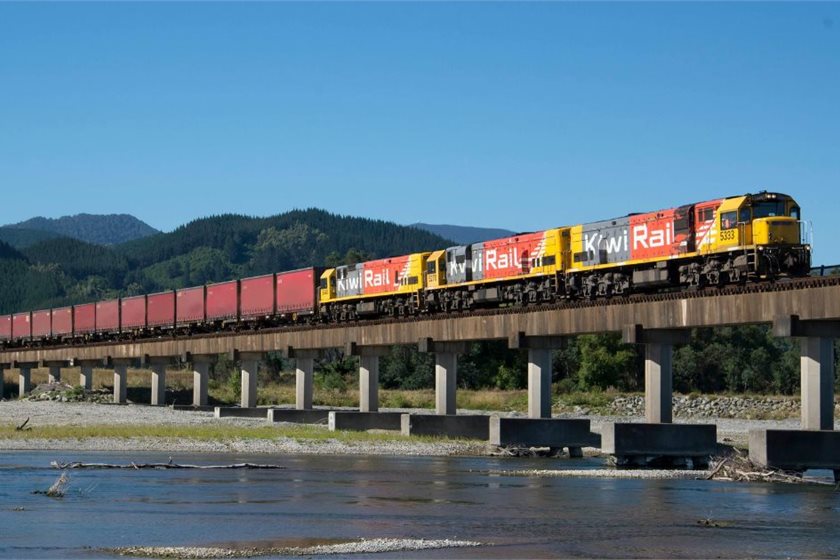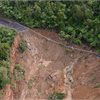Latest data confirms rail as lower carbon option for moving freight
25 Aug 2025

Media release | KiwiRail customers who chose to move their goods on rail collectively saved 220,254 tonnes of CO2e emissions in the last financial year (ending June 2025).
KiwiRail’s latest data shows that rail continues to be a lower carbon option for moving freight, when compared to carrying the same volume by road.
KiwiRail’s ‘Steel Wheels’ reporting is published annually showing key metrics, including how the use of rail in the last year avoided over one million heavy truck trips, eased road congestion, reduced road maintenance costs and saved 82 million litres of fuel.
KiwiRail Chief Customer and Growth Officer Adele Wilson says the latest figures highlight that rail on average produces 60 per cent fewer carbon emissions than road freight.
“This figure is a compelling reason to use rail. Despite some trucks increasing their carrying capacity, and potentially longer distances to travel with the rail network, moving freight with rail is still a lower carbon option,” she says.
“Rail’s carbon advantage matters to many of our customers and to many of New Zealand’s key exporters and their export markets.”
KiwiRail is a huge part of the New Zealand transport network. Last year, KiwiRail moved about 15 million tonnes of freight and rail does that with a much lower carbon footprint.
KiwiRail is also responsible for maintaining the metro rail networks in Auckland and Wellington which support on average 25 million low carbon passenger trips a year.
“Successive governments have invested in lifting the standard of the national rail network. KiwiRail is now making long-term network and service improvements that will reduce rail emissions even further and provide the improved reliability that will give our customers the confidence to make even greater use of rail," Adele Wilson says.
“We are continually exploring options to improve the way we operate to maintain rail’s carbon advantage and lower emissions across our entire business operations."
In the last year KiwiRail has:
- Welcomed the first two of 66 new efficient diesel locomotives for commissioning into service. They will be more reliable and fuel efficient than our current South Island diesel fleet
- Brought into service the first of 24 hybrid battery-diesel yard shunt locomotives which will reduce diesel usage in shunting operations
- Reduced fuel consumption on Interislander ferries by introducing technology to aid navigation and route choice
- Reduced carbon emissions on the scenic TranzAlpine service by almost 30 per cent by moving from a two to one locomotive operation.
“This year is another big year for KiwiRail as we aim to achieve our goal of a 40 per cent carbon emissions reduction in the next 10 years, against an FY19 base year, and reach net zero carbon emissions by 2050,” Adele Wilson says.
“We will soon publish our updated Rautaki Whakauka Sustainability Strategy and we are issuing our first Carbon Reduction Plan, which sets out our pathway of how we will achieve our targets. We will also publish our first Climate Adaptation Plan, looking at how we will make our assets more resilient to the impacts of climate change, such as flooding and landslides.”
print this story










